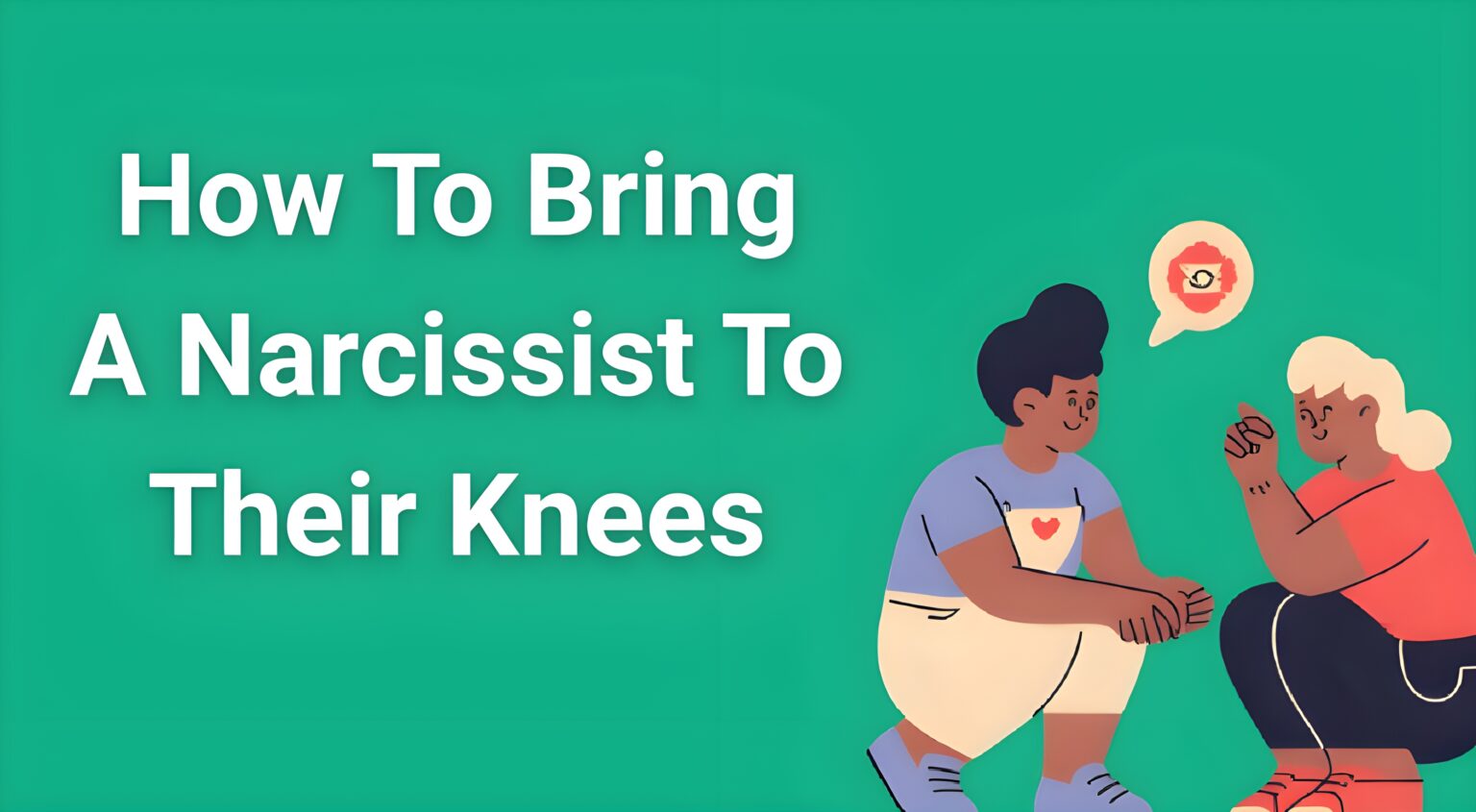If you're reading this, chances are you're exhausted from walking on eggshells around someone who seems to thrive on control and manipulation. Learning how to bring a narcissist to their knees isn't about revenge—it's about reclaiming your power and protecting your mental health through strategic boundaries and self-empowerment.
- Understanding Why Narcissists Need to Be Brought to Their Knees
- The 7 Power Moves to Bring a Narcissist to Their Knees
- Understanding the Narcissist’s Reaction When Brought to Their Knees
- Special Considerations for Different Relationships
- When You Can’t Leave Immediately
- The Long-Term Benefits of Bringing a Narcissist to Their Knees
- Breaking Free from Trauma Bonds
- Frequently Asked Questions
- Conclusion: Your Journey to Freedom Starts Now
The relationship with a narcissist can leave you feeling drained, confused, and questioning your own reality. But here's the truth: you have more power than you realize. When you understand narcissistic behavior patterns and implement specific strategies, you can effectively neutralize their ability to manipulate and control you.
Understanding Why Narcissists Need to Be Brought to Their Knees
Narcissistic individuals operate from a place of deep insecurity masked by grandiose behavior. They maintain control through manipulation tactics like gaslighting, love-bombing, and emotional manipulation. To bring a narcissist to their knees means disrupting these control mechanisms and refusing to participate in their toxic games.
The key lies in understanding that narcissists feed off emotional reactions, validation, and the ability to control others. When you systematically remove these sources of narcissistic supply, their power over you diminishes significantly.
The 7 Power Moves to Bring a Narcissist to Their Knees
1. Master the Art of Gray Rock Method
The Gray Rock technique is one of the most effective ways to bring a narcissist to their knees without direct confrontation. This method involves becoming as uninteresting and unresponsive as possible during interactions.
How to implement Gray Rock:
- Give short, factual responses only
- Avoid sharing personal information or emotions
- Keep conversations strictly business or surface-level
- Don't react to provocations or attempts at drama
- Maintain neutral body language and tone
When a narcissist realizes they can't extract emotional reactions or drama from you, they often lose interest and move on to easier targets. This approach works particularly well in situations where you can't completely avoid the person, such as co-parenting arrangements or workplace dynamics.
2. Establish Ironclad Boundaries and Enforce Them Consistently
Setting boundaries is crucial when learning how to bring a narcissist to their knees. Narcissists are notorious boundary-pushers who test limits constantly. Your consistency in enforcing boundaries becomes your greatest weapon.
Effective boundary-setting strategies:
- Clearly communicate your limits in writing when possible
- Use consequence-based language: “If you continue to [behavior], I will [consequence]”
- Follow through immediately when boundaries are crossed
- Don't negotiate or explain your boundaries repeatedly
- Document boundary violations for future reference
Remember, boundaries aren't about controlling the narcissist's behavior—they're about controlling your own responses and protecting your well-being. When narcissists realize they can't manipulate you into abandoning your boundaries, their control tactics lose effectiveness.
3. Implement Strategic No Contact or Low Contact
No contact remains the most powerful method to bring a narcissist to their knees. When you completely cut off their narcissistic supply, they experience what's called “narcissistic collapse”—a state where their grandiose self-image crumbles.
No Contact guidelines:
- Block all forms of communication (phone, social media, email)
- Avoid places where you might encounter them
- Don't respond to hoovering attempts (their efforts to draw you back)
- Ask friends and family not to share information about you
- Consider changing your routine temporarily
If complete no contact isn't possible due to shared children or work obligations, implement Low Contact:
- Communicate only about essential matters
- Use written communication when possible
- Keep interactions brief and factual
- Don't engage in emotional discussions
- Have a third party facilitate communication when necessary
4. Stop Providing Narcissistic Supply
Narcissistic supply is the attention, admiration, and emotional reactions that narcissists crave. Learning to withdraw this supply is essential to bring a narcissist to their knees effectively.
Types of supply to withdraw:
- Emotional reactions to their provocations
- Validation of their opinions or achievements
- Attention-seeking behaviors
- Drama and conflict engagement
- Concern for their problems or crises
When you stop feeding their ego and refuse to engage in their emotional games, narcissists often escalate their behavior initially. This is called an “extinction burst”—a temporary increase in negative behavior when their usual tactics stop working. Stay strong during this phase; it's a sign your strategy is working.
5. Document Everything for Protection and Clarity
Documentation serves dual purposes when dealing with narcissists: it protects you legally and helps maintain your sense of reality in the face of gaslighting attempts.
What to document:
- Dates and details of abusive incidents
- Screenshots of threatening or manipulative messages
- Witness accounts of problematic behavior
- Financial irregularities or theft
- Instances of boundary violations
Keep records in a secure location they can't access. This documentation becomes crucial if you need legal protection or simply need to remind yourself of the reality of their behavior when they attempt to rewrite history.
If you're struggling to make sense of confusing behavior patterns or need validation that what you're experiencing is actual abuse, consider getting professional analysis. A Narcissistic Abuse Clarity Report can help you understand exactly what you're dealing with and provide a clear roadmap for protection and recovery.
6. Build a Strong Support Network
Narcissists often isolate their victims from support systems to maintain control. Rebuilding and strengthening your support network is crucial for successfully bringing a narcissist to their knees.
Support network strategies:
- Reconnect with friends and family the narcissist discouraged you from seeing
- Join support groups for narcissistic abuse survivors
- Work with a therapist who understands narcissistic abuse
- Build professional relationships that boost your confidence
- Engage in activities that bring you joy and connection
A strong support network provides emotional validation, practical assistance, and helps you maintain perspective when the narcissist attempts to gaslight or manipulate you back into the relationship.
7. Focus Intensively on Self-Care and Personal Growth
The ultimate way to bring a narcissist to their knees is to become so emotionally healthy and self-sufficient that their manipulation tactics become ineffective. This requires dedicated self-care and personal development work.
Self-care priorities:
- Therapy or counseling to process trauma
- Physical health through exercise and proper nutrition
- Mindfulness practices to stay grounded in reality
- Pursuing hobbies and interests they may have discouraged
- Setting and achieving personal goals
- Learning about narcissistic abuse patterns
Many survivors find that working through a structured recovery program helps break the psychological hold narcissists maintain. The 30-Day Trauma Bond Recovery Workbook provides scientific, step-by-step guidance for overcoming the neurological addiction that keeps people trapped in toxic relationships.
Understanding the Narcissist's Reaction When Brought to Their Knees
When you successfully implement these strategies, expect the narcissist to go through predictable phases:
Phase 1: Disbelief and Testing They'll test your resolve by escalating their usual tactics, believing you'll eventually cave to their pressure.
Phase 2: Rage and Punishment When they realize you're serious, expect anger, threats, smear campaigns, or attempts to turn others against you.
Phase 3: Hoovering Attempts They may temporarily change tactics, appearing vulnerable, apologetic, or promising change to draw you back in.
Phase 4: Discard or Seeking New Supply Finally, they'll either completely discard you and seek new victims, or they'll reduce their focus on you significantly.
Understanding these phases helps you stay strong and not interpret their reactions as signs that your strategy isn't working.
Special Considerations for Different Relationships
Romantic Relationships
In romantic relationships, bringing a narcissist to their knees often means preparing for the relationship to end entirely. Focus on financial independence, legal protection if necessary, and building emotional resilience for the inevitable smear campaign.
Family Relationships
With narcissistic family members, you may need to redefine the relationship permanently. This might mean limited contact during holidays, refusing to engage in family drama, or accepting that others may not understand your position.
Workplace Situations
Professional environments require careful documentation and working within company policies. Focus on protecting your reputation, documenting interactions, and building alliances with colleagues who've witnessed the behavior.
When You Can't Leave Immediately
Sometimes life circumstances make it impossible to implement immediate no contact. You might be financially dependent, share children, or have other obligations that keep you connected to the narcissist.
In these situations, focus on emotional detachment while building your exit strategy. This means:
- Secretly building financial independence
- Gathering legal documentation
- Developing safety plans
- Working on emotional healing while still in the situation
- Learning to mentally disengage from their provocations
If you're in this position, specialized guidance can be invaluable. Resources like “How to Survive When You Can't Leave Yet” provide specific strategies for maintaining your sanity and building strength while trapped in a narcissistic relationship.
The Long-Term Benefits of Bringing a Narcissist to Their Knees
Successfully implementing these strategies doesn't just neutralize the narcissist's power over you—it transforms your entire approach to relationships and self-advocacy:
Personal Empowerment: You develop unshakeable confidence in your ability to protect yourself and make healthy choices.
Improved Relationships: You become better at recognizing red flags and maintaining healthy boundaries in all relationships.
Emotional Freedom: The constant anxiety, walking on eggshells, and emotional exhaustion disappear, replaced by inner peace and stability.
Authentic Self: You rediscover who you are outside of the narcissist's influence and manipulation.
Breaking Free from Trauma Bonds
One of the most challenging aspects of dealing with narcissists is the trauma bond—the psychological attachment that develops through cycles of abuse and intermittent reinforcement. This bond can make it feel impossible to stay away from someone who hurts you.
Understanding that trauma bonds function like addiction helps explain why willpower alone isn't enough. Your brain chemistry has been altered through the relationship's cycles of pain and relief. Breaking free requires specific interventions that address the neurological aspects of the attachment.
The withdrawal symptoms from breaking a trauma bond can include:
- Obsessive thoughts about the narcissist
- Physical anxiety and panic attacks
- Compulsive checking of their social media
- Overwhelming urges to contact them
- Feeling like you can't survive without them
These feelings are temporary and will diminish as you consistently implement no contact and work on recovery. Many survivors find that understanding the science behind trauma bonds helps them resist the urge to return to the toxic relationship.
Frequently Asked Questions
Q: How long does it take to bring a narcissist to their knees?
A: The timeline varies depending on the relationship's length, the narcissist's persistence, and your consistency in implementing boundaries. Most people see significant changes within 30-90 days of consistent no contact and boundary enforcement.
Q: Will the narcissist ever change if I bring them to their knees?
A: True narcissistic personality disorder rarely changes without intensive, long-term therapy that the individual chooses to pursue. Bringing them to their knees may prompt temporary behavior changes, but these are usually manipulation tactics rather than genuine growth.
Q: Is it safe to bring a narcissist to their knees?
A: Safety should always be your priority. If you fear physical violence or retaliation, work with professionals to develop a safety plan before implementing these strategies. Some narcissists escalate to dangerous behavior when they lose control.
Q: What if the narcissist spreads lies about me when I implement these strategies?
A: Smear campaigns are common when narcissists lose control. Focus on maintaining your integrity, document any false accusations, and trust that people who truly know you will see through the manipulation. Don't try to defend against every lie—it only gives them more attention.
Q: Can these strategies work with a narcissistic parent?
A: Yes, but the approach may need modification. Adult children of narcissistic parents can use these strategies while recognizing that family dynamics may require ongoing management rather than complete resolution.
Q: What if I share children with the narcissist?
A: Co-parenting with a narcissist requires specialized strategies. Focus on documenting everything, communicating only about the children, using court-approved communication apps if necessary, and protecting your children from manipulation without badmouthing the other parent.
Conclusion: Your Journey to Freedom Starts Now
Learning how to bring a narcissist to their knees isn't about revenge or punishment—it's about reclaiming your power and protecting your well-being. The strategies outlined here work because they address the fundamental dynamics that give narcissists their power: your emotional reactions, attention, and willingness to engage with their manipulation.
Remember that implementing these strategies requires strength, consistency, and often support from others who understand narcissistic abuse. The narcissist will likely escalate their behavior before accepting that their tactics no longer work on you. This is normal and temporary.
Your freedom from narcissistic control is possible. Every small step toward setting boundaries, withdrawing narcissistic supply, and focusing on your own healing brings you closer to the peace and authentic relationships you deserve. The person who once made you feel powerless will no longer have any hold over your emotions, decisions, or future.
The journey to bringing a narcissist to their knees ultimately leads to bringing yourself to a place of strength, wisdom, and unshakeable self-worth. That transformation is the greatest victory of all.






